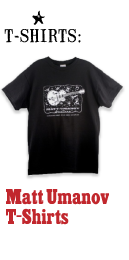
Martin Guitars of the 1960s and 1970s
When I first opened my guitar store here in New York’s Greenwich Village, in 1969, through the repairs and restorations I had already been doing for several years I had handled enough guitars, especially Martins, to become familiar with the differences in their construction over the prior years to see that this was now a special time. After World War II, in 1945-46, Martin had strengthened their designs so that their guitars would stand up to the new trends in travel and modern living, definitely a good thing. Some of the decorative elements, like herringbone inlay trim around the top, went away, but so be it.
The late 1960s brought the change from Brazilian rosewood to Indian rosewood due to dwindling world supply of the Brazilian. This was unavoidable but turned out to have its benefits, as Brazilian rosewood can sometimes be a bit fragile and so the late 1960s ushered in what has become Martin’s standard of construction to this day. While some folks grumbled, a winning situation did occur as many of the Martins of the early 1970s have turned out to be terrific instruments today, in every way. Having gotten a Martin dealership right at the opening of our store we of course ordered what the public asked for, which is to say lots of Dreadnoughts; D-18, D-28, and the ever-popular D-35. But…..seeing some of the unique tonal characteristics of the slightly smaller guitars like 00-18, 000-28 and the 12-fret 00-21 models, we stocked them too (the “big” music stores seemed to know little about this) and they were a big hit for us, along with the Dreadnoughts. We were of course into the vintage guitars as well, as both new and old ones each had their virtues and we kept as many of them on hand as we could get. In this way we were able to serve all areas of the acoustic guitar market.
When I look back on those days I am amazed at how many of those Martins were such great guitars right out of the chute. Hard to believe that was fifty years ago, but when I have the opportunity to acquire Martins of that era today I am always hopeful that they will have been nicely kept, so that I’ll have great instruments to pass on to new owners. And there have been quite a few that have come back home, sold by us as new guitars in the 1960s-70s and now ready for us to find new appreciative homes to new appreciative players. We are indeed all very fortunate to have such bounty.






